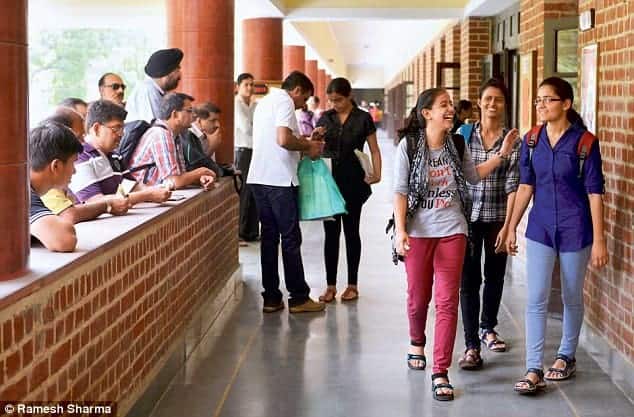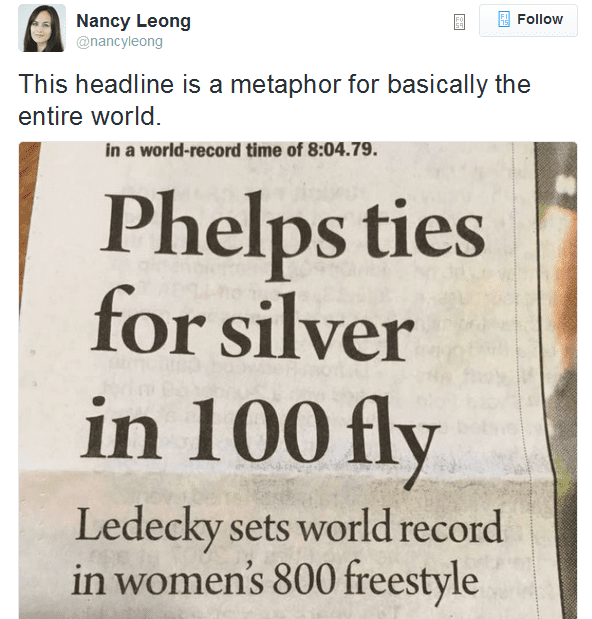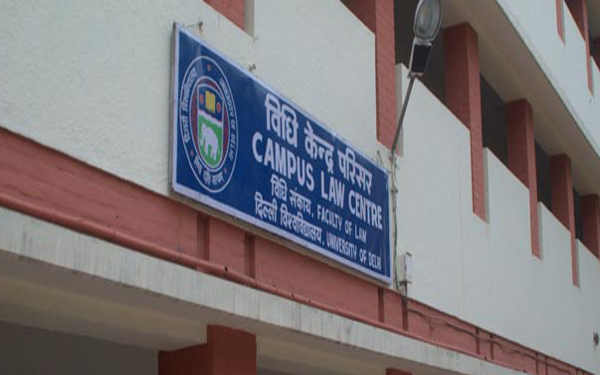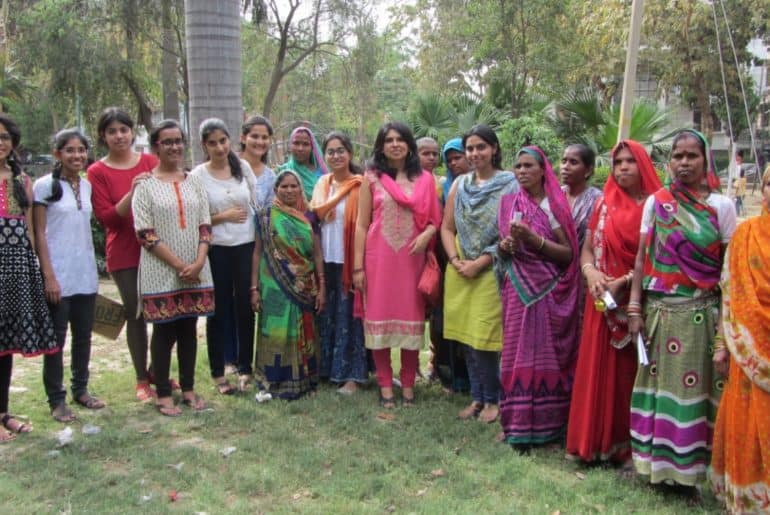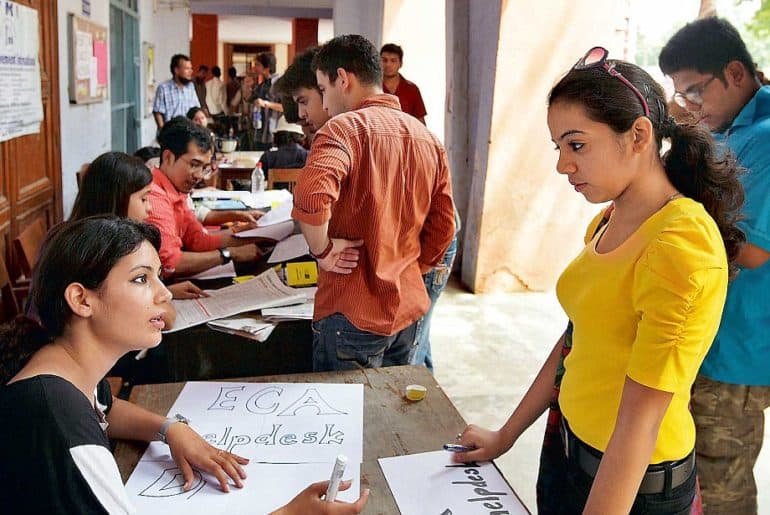13 Ad hoc teachers were given termination letters in the middle of the semester in Miranda House on August 29, 2016. The move is being described as an ‘administrative lapse’ by the Principal and has been strongly opposed by the Miranda House Staff Association (MHSA) on the grounds that the teachers were appointed according to the latest ordinances issued by the University and in line with the requirements for the CBCS course framework. DUTA and MHSA held a joint press conference on September 5, 2016 to throw more light on the issue and to convey their strong protest against the sudden, arbitrary retrenchment.
With media coverage of the 2016 Olympics rife with sexism, it’s time to call out the perpetrators and resolve to treat female athletes better.
The 2016 Olympics has not been short on controversies or things that got people talking. From Phelps winning 28 Olympic medals and breaking records to his team-mate Lochte getting entangled in legal hassles for alleged vandalism, from Simone Biles’ feats in Gymnastics to Deepa Karmakar and P.V. Sindhu making history for India, all this with numerous doubts about Rio as an Olympics location in the background. Another major talking point during the Olympics was the incredibly sobering reality about gender equality revealed through numerous instances of sexist media coverage by major newspapers and news portals.
In a move that wasn’t just bad journalism but also generally nonsensical (but strangely not uncommon), The Chicago Tribune announced Corey Cogdell’s bronze medal win in the women’s trap shooting event by citing that she was the wife of Bears’ lineman Mitch Unrein. The Olympic medallist’s name didn’t even originally figure in the headline of an article about her win while her husband’s name did. Corey’s name was added later after backlash on social media. The situation made as much sense as it would have if Nicole Johnson, Michael Phelps’ fiancée, was congratuled for his wins, which is exactly what several news portals online did in online to prove the point.
Simone Biles emerged as a star, dominating almost all Gymnastics events, yet was reduced to being called “the Micheal Jordan of Gymnastics” by the People magazine. Biles weighed in on the comments comparing her to successful male athletes in other sports by saying, “I’m not the next Usain Bolt or Michael Phelps. I am the first Simone Biles.” The statement, simple enough, also makes an important point – it is enough for female athletes to be acknowledged as successful by themselves. They needn’t be labeled as female versions of their male athletes for their achievements to count.
Other damning evidence came in the form of an actual debate by male sports presenters on Fox Sports on whether or not Olympic athletes should wear makeup, with one of them saying, “Why should I have to look at some chick’s zits? Why not a little blush on her lips? And cover those zits! I like to see a person who wins that gold medal go up there and look beautiful.” While it’s amusing and horrifying in equal parts that Arnab Goswami’s Newshour isn’t the only redundant news debate segment around, one can’t help but be appalled at the amount of male privilege that the presenters enjoy that made it possible for them to criticise actual Olympic athletes about their looks, which is possibly as least possible a matter of concern to an Olympic athlete as it can get. Looking pretty is not something female athletes, or women in general, owe to anyone in this world.
These instances aren’t all. A recent picture has been doing the rounds of social media wherein Katie Ledecky’s world record win is the sub-heading of an article, as opposed to the headline of Michael Phelps not winning his race, which was tweeted by a woman with the caption, ‘This headline is a metaphor for basically the entire world.’ True words, indeed, when media across the world would rather focus on literally anything else other than achievements of female athletes.
While the sexist media coverage of the Rio Olympics definitely grabbed eyeballs, it is far from the first or the only time female athletes have been undermined despite excelling at their respective sports. It’s the same as women getting paid $0.75 for every dollar that a man makes, and being treated as second-class citizens. While the Rio Olympics will soon be over, they need to become a turning point in media culture towards recognising that media (and hence narratives of women in the media) is still mostly controlled by white men, and that female Olympians and the women of this world deserve to be treated better, and that the people of this world deserve better journalism.
Image credits: cbc.ca
Shubham Kaushik
Bar Council of India office on August 21, 2016, Manan Kumar Mishra, the chairman of the BCI, announced that the reduction of seats in Delhi University’s Faculty of Law and the scrapping of evening classes will be implemented from the next academic year, an announcement that has come to the relief of several Law aspirants who had been affected by the delay in admissions and the sudden move of cutting down seats in DU’s Faculty of Law. According to the BCI, DU’s law faculty was flouting several guidelines with respect to the infrastructure required for the intake of the number of students the faculty takes in and the timings of these classes. The Law Faculty’s intake of students is close to 2300, when it should be 1440 according to the BCI guidelines. The faculty also holds classes in the evening, which the BCI claims is a violation of the Legal Education Rules. In the interest of the students who had applied to and appeared for the LL.B entrance for the year 2016-17 knowing the seat availability of 2310 during the time of their application, the BCI has given Delhi University a one-year relaxation for the current academic session. The three Delhi University centres will be allowed to take 767 students each, which adds up to the total of 2310 seats as originally advertised by the University. From the academic session 2017-18, the University can only take in 480 students per centre. No evening classes will be held starting from the next academic session. Other points discussed in the meeting pertained to the timings of the classes for the incoming as well as the existing batches such that the 5.30 hours of class time are covered. For the incoming batch of 2016-17, classes in the Law Centre-I will be held from 8 a.m. to 1.30 p.m. and in Law Centre-II from 2.00 p.m. to 7.30 p.m. The existing batches of second and third year students of Law Centre I and II will be allowed to take classes till 9.30 p.m. In the current academic year, Law Centre I and II will operate out of Faculty of Law’s new campus while the Campus Law Centre will operate from its current campus only. Law Centre II will shift to a new location from the next year, and the Campus Law Centre will shift to the new campus in North Campus to operate alongside Law Centre I. The decision has come to the relief of several aspirants after days of protests and a hunger strike. Abhinav Khandpur Arora, a Law Faculty aspirant and one of the thirteen students who were on a hunger strike a few days ago, was happy about the decision but lamented about the delay. He said, “I had tried everything I could – protests, strikes, legal action, writing to people- to make sure the unjust decision of reducing the seats wasn’t implemented. While the decision has come really late, I am glad that the university and the BCI came through for us.” Counseling for admission in the Faculty of Law, which was being delayed due to the tussle between the University and BCI, is likely to start soon. With inputs from Abhinav Khandpur Arora, Govind Roy and Ishaan Gambhir Shubham Kaushik [email protected] ]]>
In order to empower consumers and make them financially literate Kamala Nehru College (KNC) undertook an Innovative Project entitled KNC-304 “Consumer Evaluation of Financial Services in India”. In the month of December 2015, the project team visited the National Consumer Helpline (NCH) and State Helplines established by the Ministry of Consumer Affairs to understand their complaint handling system in the banking sector.
Team:
Principal Investigators: Dr. Sheetal Kapoor (Associate Professor, Kamala Nehru College), Dr. Azka Kamil (Assistant Professor, Kamala Nehru College), Ms. Vibhuti Vasishth (Assistant Professor, Kamala Nehru College)
Students: Sugandha Vir Anand, Priya Chawla, Vatsala Mansharamani, Shalini Jha, Shreya Jha, Rhythm Mathur, Sreedevi N. Kurur, Neha Sharma, Twinkle Shukla, Aditi Khanna.
Mentor: Prof Sri Ram Khanna and Co Mentor: Mrs Nutan Lugani
To address the nature of problems faced during banking, workshops based on financial literacy were organised by the team at Sagar (Madhya Pradesh), Patna (Bihar) and Rajender Nagar (Delhi). Informative pamphlets in Hindi language were distributed and the problems relating to banks were noted. The attendants were also guided about the mechanism of lodging a complaint with the bank or banking ombudsman. Few workshops especially catered to women in the lower income group.
The framework of the work was based on analysing customer segments in different income groups, each demanding specific types of services and attention from the bank. The results were:
Lower income group customers: Through face to face interviews with 257 respondents, it was found that these customers faced problems while opening a bank account and 23% do not have a nominee for their account. So, after their death the left over amount remains unclaimed. The Pradhan Mantri Jan-Dhan Yojana (PMJDY) has also not penetrated deeply into the society, as a lot of people are still unaware of this scheme. Many banking users do not realize that they should keep their PINs and passwords secret, and are unaware of the right place to visit in case they seek redressal.
Middle Income and net savvy customers: They use banking services such as online banking, Credit Card/Debit cards, ATMs and do not physically go to bank branches for doing transactions once they fulfil the Know Your Customer (KYC) norms. A study on 524 respondents found that, users are unaware of the need to keep a strong password and frequently change them while using online banking. Majority of the respondents are unaware of the safety features of their credit cards and are dissatisfied with the charges taken by their banks. Various customers have faced incorrect debits, and this problem was not satisfactorily resolved by their service providers. Customers feel that banks should provide more information while availing their services.
Lovleen Kaur
A tempestuous history The Law Faculty, Delhi University, has faced a lot of flak from the BCI, the authority that controls Legal Education in India, in recent years for the lack of proper infrastructure in its three centres and for flouting several of its guidelines. In 2014, in an unprecedented move, the BCI had derecognised DU’s LLB programme after the University had failed to seek fresh affiliation for its centres. According to news reports, it would have had an impact on all Law Faculty graduates post 2011 because that’s when the institution flouted BCI guidelines by increasing the number of seats without the basic infrastructure for it. Provisional affiliation was granted for the session of 2014-15. The Law Faculty currently does not have an affiliation with the BCI. After the declaration of results of the LLB entrance exam this year in July, the University had issued a circular about the delay in the admissions process and the postponement of the session due to “unavoidable circumstances”, which were that the Faculty was still awaiting BCI’s approval before starting the admissions process for the new session. The BCI recommendations arrived in the early days of August and the Law Faculty wasn’t in the clear despite plans to shift to a new, better-built campus. The BCI report approves intake of just 1440 students as opposed to the Law Faculty’s intake of nearly 2200 students in previous years. This scrapping of almost 800 students understandably did not go down well with law aspirants who were confident of making it to the prestigious institution based on its previous intake numbers. The move has left them reeling because admissions were invited at 2200 seats and the decisions to reduce their number came weeks after the declaration of the entrance results and the original date on which counseling was supposed to start.
In conversation with protesters and aspirants
On August 14, 2016, one day into the hunger strike, we spoke to some of the students who were on a hunger strike to give us their account of the situation. Seated on mattresses with table-top fans in the corridor, several accounts of the effect of the last minute cut-down of seats emerged. Binny Chopra, a law aspirant and one of the thirteen students on the hunger strike, resigned from his job at an accounts firm after the declaration of the results of the entrance exam. He also told us about several friends who didn’t pursue admissions in other law colleges despite clearing their entrances because they were counting on the Law Faculty and had made the cut according to the original number of seats offered. They are left with nowhere to go to with the other universities having closed admissions now. Satendar Awana, president of Delhi University’s students’ union, is a law aspirant himself. When asked about the BCI’s point of the lack of infrastructure to support the number of students at the law faculty, he said, “We were expecting a higher number of seats this time with the building of the new campus which has better facilities which are at par with those of private institutions.” There is a consensus amongst the protesting students about the unfairness of the situation where the original number of seats announced in the prospectus and before the entrance exam was 2200 and this number was cut down without any prior information after months of delay in the admissions. Awana informed us that the authorities, including the Dean of the Faculty of Law, were assuring the students of admissions at the original number of seats days before the notification of the cut-down dropped. The students are disappointed by the lack of resolve shown by the authorities.Recent Developments
According to our sources, on the eve of Independence Day, the protesters were visited by the Maurice Nagar SHO and the Proctor of Delhi University. They told the students that their demands were being worked on and would be taken care of in the next few days. They also requested them to adjourn their strike, to which the students agreed, hopeful about the concern being shown by the authorities. Awana later received a call from the Dean of the Faculty of Law assuring him that the authorities had written a letter to the BCI, asking them for a stay on this case which would allow them to admit students according to the original number of seats. When the student protestors asked to be shown the letter, it turned out to be something that the authorities had written to the BCI in the past. No fresh communication had taken place from the Dean to the BCI post the recent recommendations by the body. The students, who felt that they had been tricked by this move, are now back to protesting and will continue till the final decision in the case between the BCI and the Law Faculty. When asked about the assurances of the Proctor and the SHO, Abhinav Arora, a Law Faculty aspirant said, “I have no expectations from any of their assurances. I have no expectations of any progress to be made before the final hearing in the court which is scheduled for August 22, 2016. I called the Dean when I was on a hunger strike and he assured me that he’d come and show us the letter that he’d sent to the BCI. After what has happened today, I feel cheated and betrayed.” The final decision in this limbo being played by the BCI and the Law Faculty is being awaited by the students in the hope that they weren’t unfairly denied a chance to study at the institution of their choice because of carelessness of the authorities. In a phone conversation with DU Beat, the Dean of the Faculty of Law, SC Raina, denied claims that the aspirants had been tricked and showed an old letter. He said, “There were two documents. One was a letter dated July 23. The other, which was shown to Awana, was an application that was dated August 16.” When the student protesters were informed about this, they denied being shown the letter written on August 16 and said that it’s possible that it was written by the authorities under pressure after interacting with them. With inputs from Abhinav Arora, The Indian Express, The Times of India and Hindustan Times Image credits: tilakmarg.com Shubham Kaushik [email protected]]]>I’ve always loved beginnings. New years, new days, new notebooks – everything. In the constancy of life and living the same old, beginnings offer a chance for a change. If you think about it and want to give yourself an existential crisis, nothing really changes from one year to another, or one day to another. Time is a man-made concept, and is really just a bit of the old wibbly-wobbly, timey-wimey stuff. However, the good thing is that we are men (women, non-binary humans, whatever you prefer) so we do get to believe in all man-made concepts. Even if nothing really changes from one year to another and you aren’t the kind to make new year resolutions, there will still be things you’ll do differently because of it; maybe just cutting out or writing over the last digit of the year while writing the date in the first few months. That is exciting for me. It’s like the universe is trying to point out that you’ve been inertial for a while and say, “Hey, look, something has changed! Do you want to do something about it?”
So the question is – do you want to do something about it? You don’t get offered do-overs in life but beginnings are almost as good. You can’t go back and correct things but beginnings offer you a chance to make peace with things that have happened and sort of draw a fresh starting line to have another go at it with whatever changes you want to make. That is also the reason why every beginning is better than the last – you are more conscious about where you went wrong and can correct yourself if you feel that you’re slipping into the same old pattern again.
Not only do I love beginnings, I also believe that they are important. The start of something new may not colour the entire narrative but a good start sure doesn’t hurt. That’s reason enough to be excited about beginnings. If you weren’t happy with how school life turned out, you get to turn over a new leaf and leave a considerable bit of that behind. I know I did. If last year didn’t work out for you in college, you get to change things – leave societies, join societies, talk to the people you want, get new notebooks which offer the promise of blank pages which you can fill however you want, even if you just doodle all over them. But, doodle better – that’s the point.
The point is also that another man-made idea of a beginning is upon us right now – a new college year. It’s as good a beginning as any other. Whether you want to do something about it or not is entirely your choice. But what a great time for starting something! The US might get a woman President, Pokemon fans are everywhere, and Delhi rains are not a sad excuse for a monsoon. So, there are, indeed, exciting times ahead!
Shubham Kaushik
[email protected]
Image Credits: www.8womendream.com
The centralisation of ECA trials at Delhi University this year has become a cause of concern for college cultural societies and a few applicants as well. Students have responded to the change in the process by starting petitions and Facebook pages against it. Several college cultural society student headshave already spoken out against the new rules and contacted us with their grievances too. We take a close look at the matter:
The procedure: What changed?
Before this year, there were no central forms for ECA applicants. The applicants had to apply to colleges they chose individually. This was followed by a shortlisting process, in which colleges and the cultural societies took into account the applicants’ marks as well as their certificates and past achievements. The shortlisted applicants then underwent trials, with the cultural society student and teacher members as the judging panel, on the basis of which final selections were done.
According to the administration, this led to a multiplicity of trials and wasn’t fair to the applicants, hence the decision to have just one round of centralised trials this year. The ECA applicants had to fill the same common form as the other merit-based applicants. According to the very recently issued schedule by the university, there are going to be preliminary trials at identified colleges post which a list of shortlisted candidates will be released on the Delhi University website. This will be followed by final trials and counseling of the selected students.
While the University may have good intentions behind the move, with what reducing the multiplicity of trials and wanting to reduce any personal bias as the judging panel will consist of people the applicants are likely to have had no contacts with, this move has not gone down well with the current DU cultural societies’ members.
Grievances of the Cultural Society heads
One of the major issues that the society heads have brought up is the ambiguity of the entire process. Until two days ago, there was no official notice from the University about the entire process or specification of any dates. Many feel that such a short notice for ECA trials makes it difficult for the outstation applicants to participate in them. The official university notification also came two days after the release of the first cutoff list, keeping ECA applicants anxiously waiting. The notification still says nothing about the dates for specific activities.
Till last year, student post-holders and teacher conveners for various activities were the ones judging the trials but will have no role to play in the process this year, which, according to them, is unfair to the applicant as well as the society. Since it is the student members who are at the heart of all the activities that take place in the DU cultural circuit, they have insights into the kind of specific attributes the applicants need to be judged on. The ‘expert’ judged appointed by the university for the task will lack this insight into the inner workings of a cultural society and the nuances of the circuit. The cultural society members also don’t understand how the university plans to take into account their specific needs when it comes to members they want in the society.
Chandni Jain, President of the Debating Society of Miranda House and a 2014 ECA applicant herself, explained that each college and each cultural society is different and will have different requirements and environments according to which they want to select members. Making a particular criterion applicable pan-DU is equivalent of taking away the ability of the societies to maintain their distinct personalities. Moreover, it also reduces the chances of an applicant to get through. “Certain activities like music are very subjective. I know people who are all excellent musicians but got rejected from some colleges and were accepted in others,” she says.
Sankalp Luthra, a member of the Debating Society of Kirori Mal College, was also in agreement about the harmful impact of the lack of independent college criteria and feels that a pan-University criterion will not just harm the societies but also the applicants as it reduces the variety of applicants that could possibly get admissions.
The multiplicity of trials in the previous years might have been rigorous but it also allowed the applicants to have multiple chances of getting into Delhi University. Many applicants tweaked and improved their performances over the number of trials they gave and eventually clinched admissions in good colleges. With the changed system of two levels of trials – preliminary and finals – the applicants will have just one chance to make it through the first level to the next, which is a definite cause of concern.
The fact that the current student members of the cultural societies, as well as the teachers, have been kept in the dark about the entire process and know nothing about the dates for their activities, the judgment criteria and other details is problematic as well, given that they are the ones who will eventually work with and help integrate the incoming members into the society and the DU cultural circuit.
With the ECA admission process set to begin in a few days, one can’t help but think about the possible repercussions of what could turn out to be an ill-thought move by the University, and the repercussions, as is clear from the grievances of the people at the very heart of DU’s cultural scene, could be manifold and would be as unfortunate as they could have been avoidable.
With inputs from Chandni Jain and Sankalp Luthra
Shubham Kaushik
The first day of admissions at Delhi University started on a slow note across campuses. With this being the first year of DU undergraduate admissions going online, there was some understandable confusion about the procedure to be followed post the release of the first cut-off list. Unlike previous years when the entire process had to be done at the colleges, from the forms to the final applications, this year the aspirants were required to first log on to the UG admissions portal and generate the college specific form, based on whichever college/course they were eligible for. The only on-grounds element was the verification of the documents. A few unaware aspirants and their hassled parents were seen on college campuses in the morning, being informed about the procedure by college volunteers.
The chaos was compounded by the DU UG portal which was, as informed by several concerned aspirants, non-functional. “DU needs to take care of the technical aspects of such a large-scale admission process. When they announce something on the university website, we expect them to abide by it,” said a hassled outstation aspirant to our journalist in Lady Shri Ram College for Women.
Not being able to generate the form online and confused about the procedure, the number of aspirants at colleges was definitely lower than expected, especially for certain South Campus colleges like Kamala Nehru College.
The Delhi University Teachers’ Association (DUTA) had already expressed its non-cooperation with the admission process, which might have led to more issues. Teachers of several colleges were seen giving dharnas on campuses. Professor Dubey from Moti Lal Nehru College said, “We are not cooperating with the admissions process but at the same time, we’re not blocking it if the college authorities decide to go on with it with the help of the non-teaching staff… The point of our protests is to let parents and aspirants know that the recent UGC amendment doesn’t just affect teachers but also the quality of education in the university.”
Image Credits: www.fuccha.in
Shubham Kaushik
Delhi University colleges released the first cut-off list for undergraduate admissions. Amongst the highest setters of cutoffs are the usual culprits but also colleges like Kalindi College, with a cut-off of 98.50% for the general category for Economics and SGTB Khalsa College with a cut-off of 98.75% for general category for English.
You can check the combined cut-off list released by Delhi University here: Link for the first cut-off
Timings for morning colleges: 9 a.m. – 1 p.m.
Timings for evening colleges: 4 p.m. – 7 p.m.
Sri Ram College of Commerce has released their first cutoff list for B.A (H) Economics and B.Com (H) courses. The highest eligibility criteria is for Economics – 98.25% for the General category.
| Category | B.Com (H) | B.A (H) Economics |
| General | 98 | 98.25 |
| OBC | 95.75 | 96.25 |
| SC | 93.50 | 95.50 |
| ST | 88.25 | 93 |
| PWD – VH | 90 | 93.75 |
| PWD – HH | 90 | 96 |
| PWD – OH | 92.25 | 96.75 |
| Kashmiri Migrants | 88.50 | 95.25 |
The college has directed candidates belonging to the General, OBC and SC categories seeking admission to B.Com (H) to report for admissions as per the following schedule dueing 9:00 a.m. and 1 p.m.:
| Date | General | OBC | SC |
| 30.06.2016 | 98.25 and above | 96 and above | 95 and above |
| 01.07.2016 | 98 and above | 95.75 and above | 93.5 and above |
| 02.07.2016 | All | All | All |
Candidates belonging to other categories have been advised to contact personally for completing the admission formalities on any day between 30 June and 02 July between 9:00 a.m. and 1 p.m. with the prescribed documents.
Shubham Kaushik

